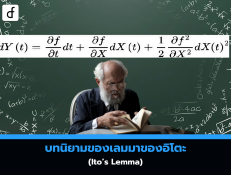
5 Recommended Books on Finite Difference Methods for Quant Analysts
2025-05-16 03:20:26
Finite Difference Methods (FDM) are essential tools for solving the Black-Scholes equation and other quantitative models by approximating the derivatives of partial differential equations (PDEs) that are continuous. This approach has been widely adopted in financial engineering, as demonstrated by the work of Paul Wilmott and Daniel Duffy.
Here are 5 FDM books that both novice and professional Quant analysts should have for reference:
1. Finite Difference Methods in Financial Engineering: A Partial Differential Equation Approach
By Daniel J. Duffy
This book is more theoretical than Duffy's other book, which will be discussed in section 5. It starts with PDE theory and then explains the FDM technique in detail. It then applies it to the one-factor Black-Scholes problem and gradually expands to multi-dimensional and multi-factor models.
There is a special chapter on variable boundary problems and practical demonstrations using C++. It is very suitable to be used alongside the book Financial Instrument Pricing Using C++, which will be discussed last.
2. Pricing Financial Instruments: The Finite Difference Method
By Domingo Tavella and Curt Randall
Although it is an older book, it remains valuable. It starts with an explanation of stochastic differential equations and analytical solution methods such as Feynman-Kac, then moves on to FDM, analyzing the stability of the methods and techniques for solving sparse linear systems.
There are also chapters that discuss special topics, such as computational efficiency and the jump-diffusion model. Even though some techniques may seem outdated, they are still useful for professional Quant analysts.
3. Numerical Solution of Partial Differential Equations: Finite Difference Methods
By G. D. Smith
The comprehensive theory book covers parabolic, elliptic, and hyperbolic PDEs, with a particular focus on parabolic equations directly related to Black-Scholes. It provides detailed explanations of the stability of numerical methods and includes nonlinear PDEs.
Suitable for those who want to understand the concepts and proofs behind FDM. Although it doesn't focus on programming, it provides deep insights that other "practical" books might lack.
4. Numerical Methods for Partial Differential Equations
By G. Evans, J. Blackledge, and P. Yardley
This book is part of the Springer Undergraduate Mathematics series and is more purely mathematical than others. Starting with the basics of matrices, followed by FDM for parabolic and hyperbolic equations.
The second half of the book delves into the finite element method for both ODEs and PDEs, complete with mathematical proofs such as the principle of variation and stability analysis. It is suitable for those seeking a deep understanding, without focusing on coding or practical applications.
5. Financial Instrument Pricing Using C++
By Daniel J. Duffy
Duffy's main book on applying PDEs in Quant work using C++ systematically starts with using STL with financial examples and then builds basic classes, such as arrays/matrices, optimized for numerical algebra.
The main content focuses on solving ODE, SDE, and PDE equations using object-oriented programming (OOP) methods such as Crank-Nicolson, Jacobi, and Gauss-Seidel. The book also discusses design patterns and presents UML diagrams, helping to understand the code structure systematically.
If you work in PDE every day, this book will be an indispensable desk reference.
If you want to learn FDM in depth and be ready to apply it in Quantitative Finance. These five books represent a comprehensive set of knowledge covering both theory and practice.
Reference: Top 5 Finite Difference Methods books for Quant Analysts
From https://www.quantstart.com/articles/Top-5-Finite-Difference-Methods-books-for-Quant-Analysts/
Leave a comment :
Recent post

2025-01-10 10:12:01

2024-05-31 03:06:49

2024-05-28 03:09:25
Tagscloud
Other interesting articles
There are many other interesting articles, try selecting them from below.

2024-01-19 05:38:03

2023-10-17 03:13:43

2025-05-06 09:34:54

2025-03-20 10:42:43

2024-11-06 11:31:16

2023-10-05 01:42:29

2024-04-11 05:34:50

2024-09-17 11:15:06

